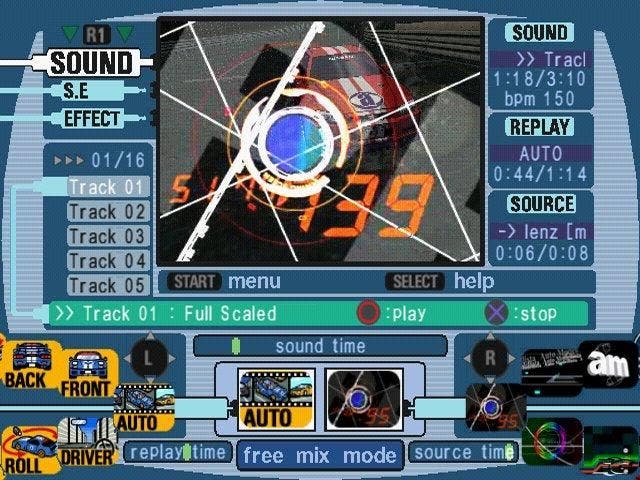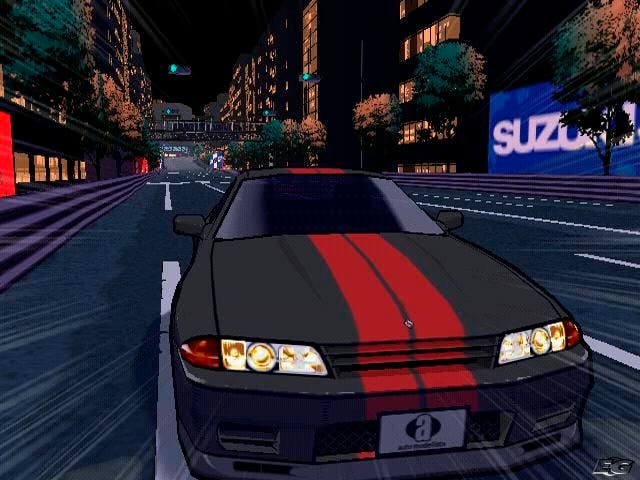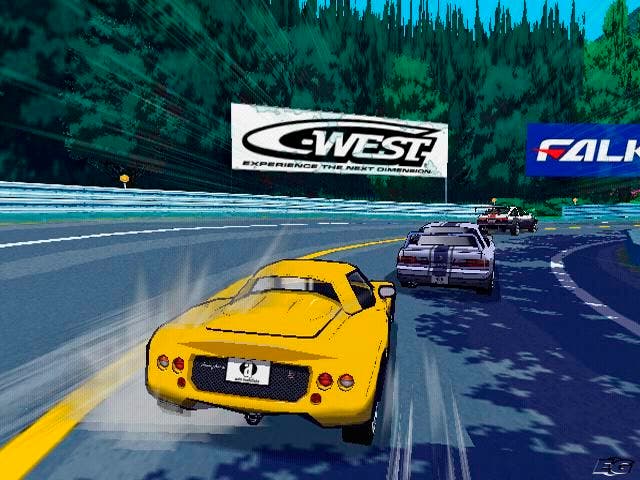Auto Modellista
Review - Tom relives his fantasies of Saturday morning Speed Racer cartoons
Auto Modellista is an awkward game to review. The novelty graphics are definitely the game's best feature, and the chances are that the main thing you know about the game is that it basks and roars beneath an elegant cel-shaded veneer; that speed lines are drawn in front of you as you race through tunnels, neon cityscapes and leafy autumn hairpin magnets; that the cars have been modelled as well as they need to be, on the cream of Japanese motorsport, but without inheriting every single unnecessary line, nook and cranny; and that in-keeping with Capcom's recent pledge to treat hardcore gamers with a bit more respect, it boasts both 60Hz and widescreen options.
What you won't know until you play it is that Auto Modellista is split into several main sections; Arcade, Garage Life (career), Replay Theatre and VJ mode, that it doesn't play as well as it looks, that it's limited throughout and that it's far, far too easy. But let's not get carried away just yet.

Life in the fast lane
The Arcade aspect is split into single race, time trial and head-to-head modes, and it shares its collection of cars and tracks with Garage Life, which is where you unlock more of them. It's all pretty self-explanatory, apart from the VJ mode, which allows you to tinker with the way your races replay, like inverting colours, adding pans, zooms, camera changes and special visual effects, and even changing the soundtrack (complete with one of those wonderfully comic sound test modes to try everything out).
Garage Life mode is where you're expected to spend most of your time. Auto Modellista's creators may not have worked on a driving game before (which is more than evident elsewhere), but they certainly know about wrenches, sockets, sprockets, cogs, wheels and other bits of car [I'm not sure those were all 'bits of car' actually, Mr. So-called Autophile -Ed]. Unlike Gran Turismo though, you're not expected to work your way up the ranks, and can plump for any car from a handful of Japanese manufacturers including Nissan, Toyota, Suzuki, Subaru and Mazda. It's a bit disappointing to see a complete absence of European and American cars, but presumably Capcom didn't want to splash too much cash on its first racing title. Expect to see a more varied selection in the inevitable (hopefully improved) sequel.
Once you've chosen your car (Subaru Impreza WRX sounds good to us) then you can set about tuning it, altering suspension, balance, weight reduction and other values (or leaving it up to the CPU) and - once you've amassed some cash - buying new parts. You can also create your own number plate, deck out your car in curious colour schemes, or even develop your own. The game's producer Yoshihiro Sudo went for a pink outer shell with a grey bonnet and a big Auto Modellista logo at this year's ECTS demonstration, revealing that he actually drives a car very much like it in real life. So, if you're a boy racer with a souped up VW Golf circa 1980, which looks like Chitty Chitty Bang Bang laced with LSD, then Auto Modellista is probably the game for you. You can even put posters up in your own personal garage, which is nice.
Connoisseurs of finer automobiles may find the initial absence of classy offerings a bit off-putting, but if you can put up with driving a modern gas guzzler then you'll be rewarded after a time with access to some truly lovely old concept cars and speedsters, our favourite being the Nissan Fairlady 240Z.

Locked in a Cel
Know though you may that Auto Modellista looks good, it isn't until you trundle out onto the circuit for a single race that the full impact of the game's cel-shaded visuals makes its presence known. The cars look fantastic, aping real life designs without relying on too much superficial detail to get the point across. The bodywork gleams with the sort of multi-tone cel-shading that, oddly, Zelda has been so warmly praised for in the specialist press.
Tracks are less consistent though - in many cases, your immediate surroundings are cel-shaded, but buildings, bridges, trees, barriers and scenery beyond the racetrack look decidedly drab. The problem is that when a building stops looking like a cartoon, you pay more attention to the blandness of the texturing (since most cels are just blocks of colour), and the overall effect seems poorer.
Another problem is in collisions. Cars turn almost sideways at even the slightest brush, and in the complete absence of appreciable damage (either visually or in gameplay terms), it leaves the cars looking like Day-Glo toys being flung together.
There are some nice effects to take your mind off it though. The weather and time of day varies, and Capcom has paid a lot of attention to the little details, like the sight of little splashes of water kicking up from the tyres in the rain and lights flitting through the raindrops, the leaves which float up from the track in your wake, the way the cars dip through tunnels before the camera catches up (which embodies the pit-of-your-stomach feeling peculiarly well) and the way speed lines emanate, sparks fly as cars collide and things like wheelspin are represented on-screen - it's all remarkably well done.
Some people will draw too much attention to the little inadequacies - even those for which the PS2 must shoulder the blame, like the overly jagged look - but on the whole Auto Modellista is very successful in its attempts to bring cel-shading to racing, and Capcom is bound to improve upon it with the sequel.

Track failings
So, given our stance in the opening folly, and the decidedly upbeat tone since, you may be gradually wising up to where Auto Modellista falls down. And fall down it does.
We would have been happy for Auto Modellista to look a bit pants for all its cel-shading PR, if only it had played like Ridge Racer. If there was only one car and one track, and it played like Gran Turismo, we would have encouraged people to rent or steal it. But given the shape of the handling, AI and challenge, it's very difficult to remain positive.
The main problem is in the braking and steering. Acceleration is easy, and manoeuvring through traffic at low speeds is also pretty simple, but this is an arcade racer, and as such there's a desire and expectation for players to paste the accelerator down and expect to weave through hairpins as if they were slip roads on a motorway. Sadly, it takes really heavy, speed-shattering braking to make it through turns, and the handbrake behaviour is just plain odd. Furthermore, turning is awkward at best with the brakes clamped down, so the whole process of driving cars in Auto Modellista is quite arduous and counter-intuitive.
In order to balance this, the game is actually overly easy, too. Track design varies from endless straights to tight clusters of hairpins, but no matter how badly you drive, you can almost always ease through to first place simply by driving very fast. With only nine tracks (although you can race them forwards, backwards, mirrored etc), you'll quickly tire of the environments, too, and unlock everything the game has to offer.
Tyring
Auto Modellista would be an excellent game if all we did was look at the pretty pictures and fiddle with car design, but Capcom has singularly failed to keep the driving end up for us, and it hurts the game. And in the absence of the previously promised multiplayer, we're left with very little to recommend. It has been suggested that a multiplayer disc may be released once PS2 has gone online in Europe, but frankly we'd rather wait for Capcom to learn from its mistakes and produce something truly memorable with the sequel. Hiring some Ridge Racer fanatics to help with the design wouldn't hurt, either.
Auto Modellista screenshots (PS2)

